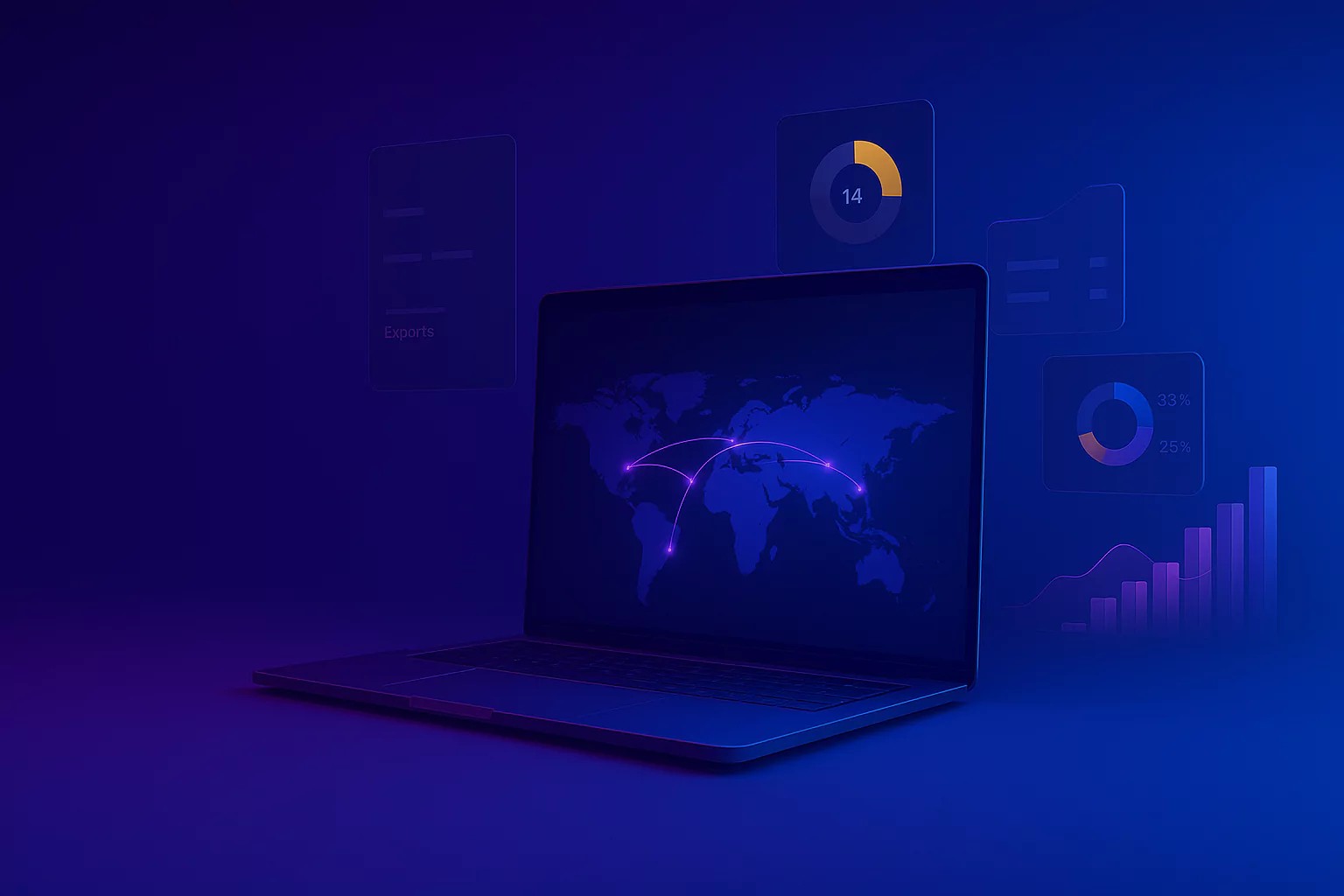Big Data Analytics Versus Traditional Data Analytics: A Comprehensive Overview
Big Data Analytics Versus Traditional Data Analytics: A Comprehensive Overview
Traditional data analytics has long been regarded as a trusted method for managing smaller, simpler datasets, providing businesses with reliable insights from well-defined data. However, the landscape of data has evolved dramatically; today, we are faced with vast amounts of information generated at unprecedented rates. Thanks to technological advancements, we can now generate, gather, and process enormous volumes of structured and unstructured data, known as “big data.”
In this guide, we will explore the fundamentals of both traditional and big data analytics, examining their benefits, applications, and limitations. By understanding these two approaches, you can better navigate the complexities of modern data management.
🎧 Listen to the Podcast
Prefer listening over reading? You can also explore the differences between Big Data Analytics and Traditional Data Analytics in this podcast episode. Click below to listen:
Traditional Data Analytics
Traditional data analytics remains a fundamental approach for interpreting data and guiding strategic decisions. In this section, we will look at how it continues to impact today’s business landscape.
What is Traditional Data?
Traditional data analytics focuses on analyzing structured data, typically organized in databases or spreadsheets – such as customer information, inventory lists, or financial records. This approach often relies on statistical methods and tools like SQL (Structured Query Language) to search for and retrieve specific information, enabling companies to make informed decisions and enhance performance.
Structured data is typically stored in well-defined structures, such as rows and columns, making it easier for computers to process. However, while this organization facilitates analysis, traditional data often provides less advanced insights compared to big data.
Real-life Applications
Traditional data analytics plays a vital role across various sectors, such as healthcare, retail, finance, and energy. The following examples explain its applications in these fields and its significance in everyday business operations:
HealthcareAllows hospitals to organize and manage patient information, keeping track of patient histories, lab results, and treatment plans. This helps doctors monitor progress, make accurate diagnoses, and coordinate care more effectively. |
RetailHelps businesses analyze transactions and customer feedback, manage stock levels, and improve sales strategies. This allows them to predict demand, avoid stock shortages, and adjust pricing based on past sales. |
FinanceEnables financial institutions to oversee accounts and monitor transactions. For example, banks analyze data to detect fraud, assess credit risks, manage investments, and ensure compliance with financial regulations. |
EnergyAllows utility companies to analyze data from meters and production records, ensuring reliable energy distribution through demand forecasting, resource management, and maintenance planning. |
Challenges of Processing Traditional Data
While traditional data analytics have been proven reliable for years, it struggles to keep pace with the increasing volume, complexity, and speed of modern data. This section examines these challenges and highlights the necessity for businesses to adapt in today’s data-driven landscape.
- Scalability: Traditional systems often face difficulties handling the vast volumes associated with big data. As data grows, these systems typically require expansion by adding resources to a single server, which can be costly and slow, leading to potential technical issues.
- Performance: As the variety and speed of data increase, traditional systems may struggle to maintain fast and accurate processing. This can result in slower performance and a higher likelihood of errors.
- Complexity: Traditional systems are designed to manage simpler, more uniform data. When faced with the complexity and diversity of big data, they can become overwhelmed, negatively impacting the quality and consistency of analysis.
- Functionality: Big data demands advanced capabilities such as machine learning and artificial intelligence, which are often lacking in traditional systems. This absence makes it challenging to perform in-depth analyses and extract valuable insights from large datasets.
- Interoperability: Integrating traditional data tools with modern big data technologies can be difficult. Differences in technology and data formats may create compatibility issues, complicating the effective use of both old and contemporary systems.
Traditional Data Benefits
Despite these challenges, traditional data analytics offers distinct advantages, especially when quick, secure, and easily controlled access to information is required. Here are some key benefits that underscore its continued relevance:
- Faster Data Access and Delivery: Traditional databases offer quick and reliable access to data by operating independently on local servers or computers, bypassing issues like network delays, service disruptions, and security breaches.
- Easier to Secure: Due to their smaller scale and lack of distributed architecture, traditional databases are easier to secure. They often do not rely on third-party storage, making them suitable for managing sensitive or confidential information.
- Greater Control over Data Management: Traditional databases offer users significant control over data management and integrity. Users can define data types, set rules, and establish relationships tailored to their needs.
- Easier to Interpret: Data processed with traditional methods can be easily handled using standard functions, making it more accessible for individuals without advanced technical knowledge.
- Lower Cost and Resource Requirements: Processing big data often necessitates costly, high-performance systems that require substantial resources. In contrast, traditional methods typically involve lower costs and fewer resource demands.
Big Data Analytics
Data is being generated at an unprecedented rate, and businesses are eager to harness its potential. This section explores why big data analytics is essential and its implications for the future of business.
Introduction to Big Data
Big Data refers to large and complex datasets that exceed the capabilities of traditional processing methods. These datasets are generated rapidly and come in various formats, making them challenging to manage with conventional techniques. However, with the right technologies, businesses can analyze this data to extract valuable insights. Big data is characterized by five key attributes, known as the “5 V’s”: Volume, Velocity, Variety, Veracity, and Value.
Volume: Big data encompasses massive amounts of information, often reaching petabytes or more. Managing this scale requires robust tools capable of processing large datasets quickly and efficiently.
Velocity: Big data is often generated in real-time, necessitating immediate processing and analysis to facilitate timely decision-making.
Variety: Big data comes in multiple forms, including structured data such as databases and unstructured data like videos, images, and social media posts.
Veracity: With the sheer volume of data available, big data requires filtering out noise and errors to ensure accuracy.
Value: The true significance of big data lies in its ability to provide actionable insights that enhance business operations.
Additionally, big data can be classified into three types: structured data, which is organized and typically found in databases or spreadsheets, making it easy to search and analyze; unstructured data, which lacks a specific format, such as videos or social media content, and while harder to analyze, contains valuable insights; and semi-structured data, a hybrid that has some organization but does not fit neatly into traditional databases, with examples including emails and XML files.
Real-life Applications
Big data is transforming industries in significant ways. These include healthcare, retail, finance, and energy.
HealthcareEnables more personalized care and enhances overall healthcare standards. For instance, analyzing historical data can help identify risk factors early, allowing medical professionals and patients to take proactive measures before conditions deteriorate. |
RetailCreates a seamless and customized shopping experience. Customer data can be used to understand preferences and provide tailored recommendations based on previous purchases, improving customer satisfaction and inventory management. |
FinanceHelps with fraud detection. With millions of digital transactions occurring daily, banks rely on real-time data analysis to spot unusual activities, such as a simultaneous and cross-country credit card usage. This capability enhances online banking security and helps prevent fraudulent transactions. |
EnergyAids in predicting electricity demand. Utility companies analyze sensor data and historical usage patterns to forecast future energy needs, enabling more efficient power distribution. |
Challenges of Implementing Big Data Analytics
Implementing big data analytics presents several challenges that organizations must address to ensure effectiveness. Below are common issues they can encounter:
- Lack of Skilled Data Professionals: Finding qualified data scientists, analysts, and engineers is often challenging due to a high demand and limited talent pool, making it difficult for companies to build effective teams.
- Rapid Data Growth: The volume of data generated by businesses is constantly increasing, requiring updated infrastructure to effectively process, store, and secure data.
- Data Quality Issues: Raw data can be messy and unorganized, leading to inaccurate analyses if not cleaned and properly prepared.
- Compliance Challenges: Big data often contains sensitive information, necessitating adherence to strict data privacy regulations, which can be complex and time-consuming.
- Integration Difficulties: Many businesses work with disparate systems where data exists in silos. Integrating these different sources is essential to ensure seamless analysis but can be challenging.
- Security Risks: The amount and depth of information contained in big data makes it a prime target for cyberattacks. Protecting these large, complex datasets requires robust security measures to prevent breaches and safeguard sensitive information.
Big Data Benefits
Big data enables businesses to collect and process real-time information, offering several key benefits, including the following:
- Innovation: Insights derived from big data allow companies to quickly adapt to market changes. This helps them enhance existing products or develop new ones, providing a competitive edge.
- Market Intelligence: Big data continuously reveals new growth opportunities. By analyzing trends and customer behavior, businesses can gain insights that help them make smarter decisions and uncover new avenues for expansion.
- Identifying Areas of Improvement: Big data tools can quickly pinpoint areas where businesses can cut costs, save time, and enhance efficiency.
- Risk Management: Analyzing large datasets enables organizations to better assess risks, making it easier to identify potential threats early and formulate strategies to manage or mitigate them.
- Customer Acquisition and Retention: Big data helps companies understand customer preferences and buying habits, allowing them to tailor products and services to meet specific needs. This personalization enhances customer satisfaction and loyalty, driving more sales.
- Supply Chain Management: Big data facilitates real-time predictions that help businesses optimize their supply chains. This ensures that demand, production, and distribution processes are aligned, allowing products to reach their destinations when needed.
Elevate your Business with Infomineo’s Data Analytics Expertise
At Infomineo, we have cultivated expertise in analyzing both traditional and big data to address the needs of various sectors, including finance, healthcare, retail, and more. Leveraging advanced tools like Power BI and Tableau, we deliver real-time analytics that empower our clients to identify patterns and mitigate risks.
Our highly skilled data analytics team navigates complex challenges with specialized knowledge, providing actionable insights that drive decision-making. We focus on merging large datasets with business acumen to offer customized insights aligned with each client’s strategic goals.
Comparing Traditional and Big Data
Whether dealing with smaller, organized datasets or large, complex data streams, the same core principles of data management apply: accuracy, security, and organization are essential for deriving meaningful insights. This section explains the similarities and differences between traditional and big data.
Similarities
Despite their differences in size and complexity, traditional data and big data share several important similarities:
- Data Quality: Both types of data rely on maintaining high-quality standards, ensuring accuracy, completeness, and reliability.
- Data Storage: Effective storage is crucial for both, ensuring that data is well-organized, accessible, and securely managed.
- Data Security: Strong security measures are necessary for protecting sensitive traditional and big data from unauthorized access and potential breaches.
Data Processing: Extracting useful insights from data is essential for both approaches; however, big data often employs more complex processing methods compared to traditional techniques. - Data Source: Both traditional and big data rely on gathering insights from diverse sources—whether internal or external.
- Data Integration: Integrating data from multiple sources is necessary for both, as it helps create a more complete view, leading to better business decisions.
Differences
While both traditional and big data analytics help businesses gain insights, they differ significantly in their approach to handling data. Below, we explore the key differences between these two types of analytics, covering aspects like size, type, technologies, and more.
Elements |
Traditional Data |
Big Data |
Size |
Typically measured in gigabytes or terabytes and stored centrally on a single server. | Measured in petabytes, zettabytes, or even exabytes, requiring advanced, cloud-based storage solutions. |
Type |
Usually structured and stored in formats like spreadsheets or databases. | Includes a mix of structured, semi-structured, and unstructured data. |
Architecture |
Uses a centralized system, which is cost-effective for smaller datasets. | Employs a distributed system for scalability and fault tolerance. |
Sources |
Primarily sourced from ERP systems, CRM systems, and online transactions, focusing on enterprise-level information. | Draws from a wider range of sources, including social media, sensor data, and multimedia content. |
Methods |
Analysis usually involves basic statistical methods. | Requires advanced techniques such as machine learning and data mining. |
Tools and Technologies |
Relies on SQL-based databases, spreadsheets, and conventional tools. | Uses specialized tools such as Hadoop, Spark, NoSQL databases, and machine learning libraries. |
Complexity |
Supports simpler, smaller-scale business processes. | Designed for complex, large-scale operations that require more advanced analytics and processing capabilities. |
Flexibility |
Traditional databases have a fixed schema and are best suited for structured data. | Big data systems use a dynamic schema that can accommodate both structured and unstructured data. |
Costs and Resource Requirements |
More cost-effective due to simpler data management. | Generally more expensive due to infrastructure and specialized expertise needs. |
Privacy and Security |
Security practices are more standardized and rely on established protocols to protect sensitive information. | Requires advanced privacy measures due to diverse sources and higher risks of breaches. |
Scalability |
May struggle with rapid data expansion and is less flexible in adapting to changing requirements. | Easily scales to handle growth and adapt to new data sources. |
Data Integration Difficulty |
Integrating data is relatively straightforward. | Integration is more challenging due to the variety and volume of data involved. |
Real-time Analytics |
Data is typically analyzed after events occur. | Data is often analyzed in real-time to provide immediate insights and responses. |
FAQs
What are the main challenges of using Big Data Analytics?
Common challenges include finding skilled data professionals, managing vast data volumes, ensuring data quality, complying with privacy regulations, integrating data from various sources, and protecting against security threats.
What are the key characteristics of Big Data?
Big Data is characterized by the following 5 Vs:
- Volume: Large amounts
- Velocity: Rapid generation and processing
- Variety: Different types
- Veracity: Data accuracy
- Value: Derived insights
What are the benefits of Traditional Data Analytics?
Traditional data analytics offers fast and reliable access to data, simpler security due to its smaller scale, and greater control over data management. It is also easier to understand and more cost-effective compared to big data solutions.
What challenges does Traditional Data Analytics face?
Traditional data analytics struggles with scalability when managing large volumes of data. It may also experience performance issues when dealing with diverse data types and speeds. Additionally, it lacks advanced tools like machine learning and can be difficult to integrate with modern technologies.
How does Traditional Data Analytics compare to Big Data Analytics?
Both emphasize high-quality, effective storage, strong security measures, and the need for processing and integration. However, big data analytics manages larger volumes, faster speeds, and more complex data types, while traditional data analytics is simpler and often more cost-effective for smaller datasets.
Conclusion
Big data analytics and traditional data analytics each have their strengths and limitations. Traditional data analytics excels at handling structured data and maintaining security but struggles with scalability and complex datasets. In contrast, big data analytics is adept at managing vast amounts of diverse data in real time, providing valuable insights that help businesses remain agile. However, it faces challenges such as rapid data growth, ensuring accuracy, and integrating with existing systems.
Despite their differences, both methods aim for high-quality data, effective storage, strong security, and thorough processing. The choice between them depends on your specific needs, data types, and how quickly you require insights. Understanding these factors will guide you in selecting the best approach for your data analytics strategy.










